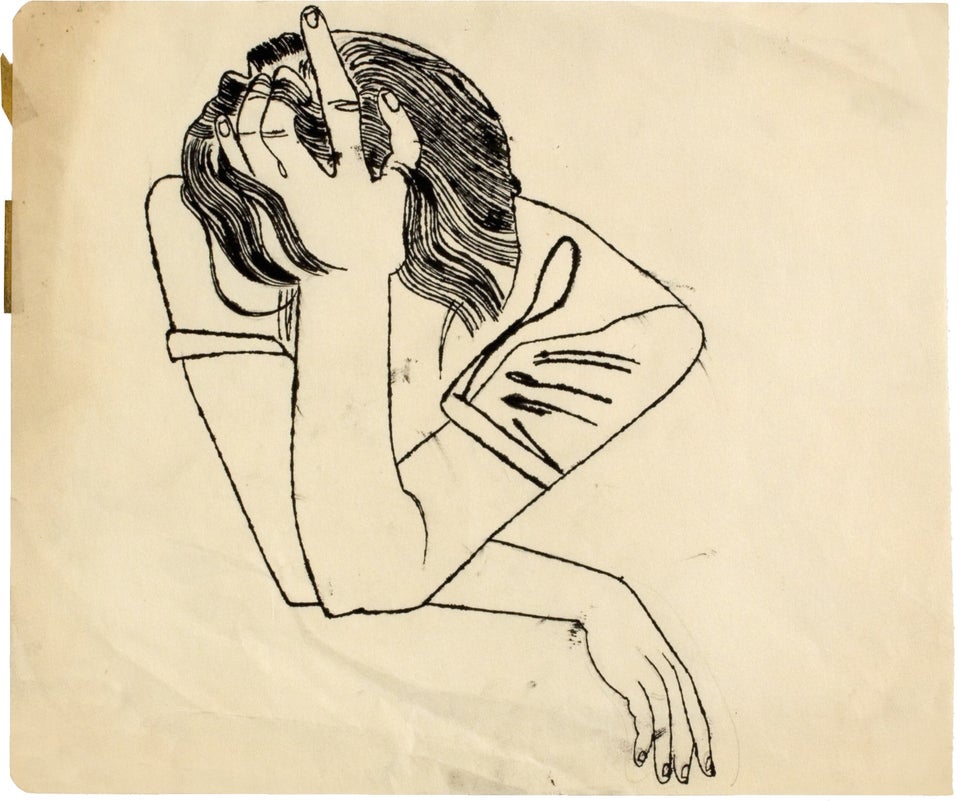If we think of the kimono at all, it's of the heavy, silken, flowery garments of the Edo period, starting in the early 1600s. They were status symbols, a way for merchants to show their wealth without threatening the primacy of shoguns, who ruled the fiefdom.
As Japan westernized, so did kimonos, transformed by imported powered looms and chemical dyes. The mix of old and new -- that familiar T shape blooming with modernist designs -- is startling to say the least. If "Mad Men" were set in Tokyo, these would be in the costume department closet.
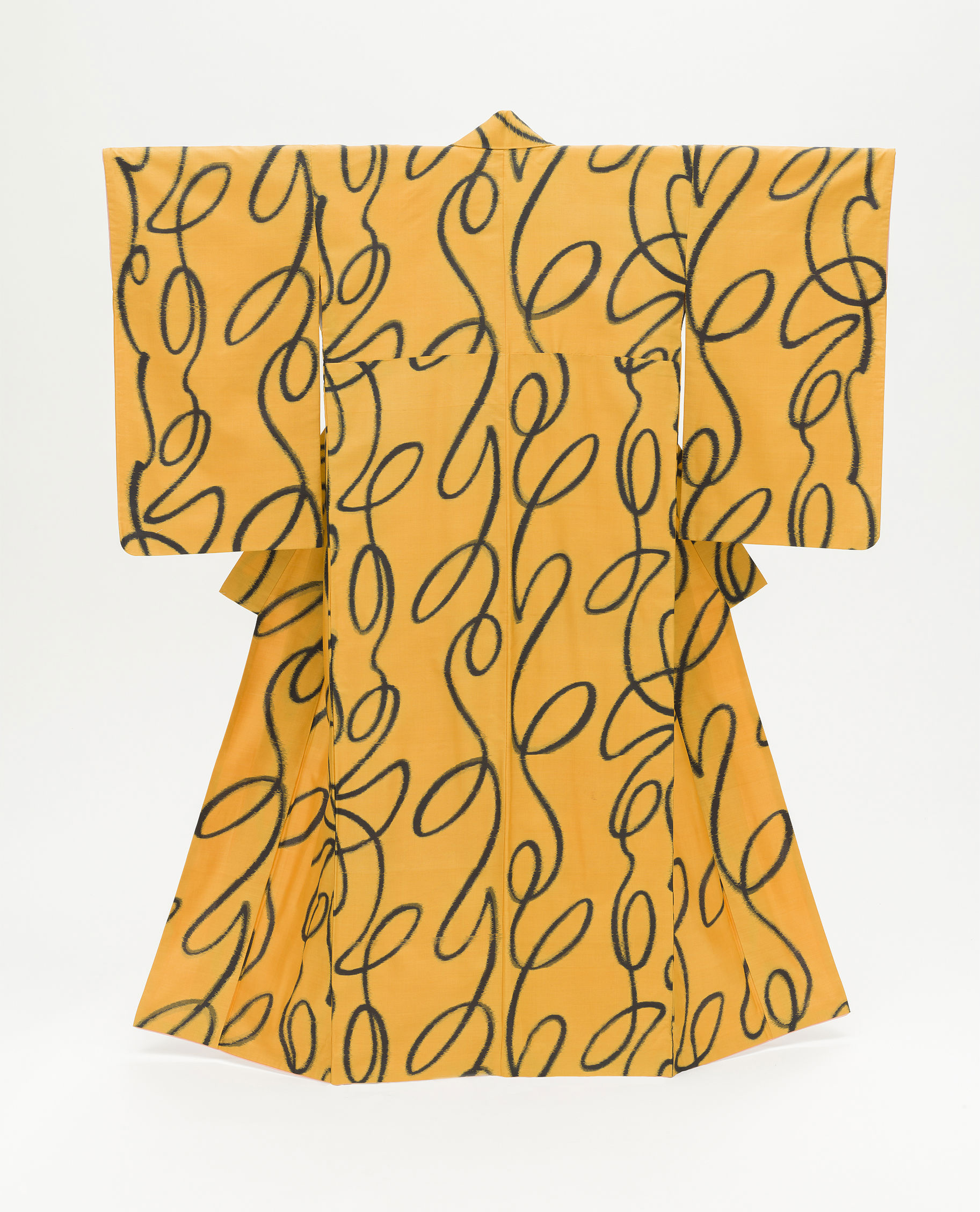
Woman's Kimono with Undulating Vertical Lines. Japan, mid-Shōwa period (1926-89), c. 1950. Photo and caption courtesy Museum Associates/LACMA.
Starting this weekend, the Los Angeles County Museum of Art (LACMA) is the place to see these fascinating creations. On display for the first time are a selection of kimonos dated after the Edo period. The exhibit, "Kimono For A Modern Age," includes 30 pieces from the museum's textile collection, none of them predictable.
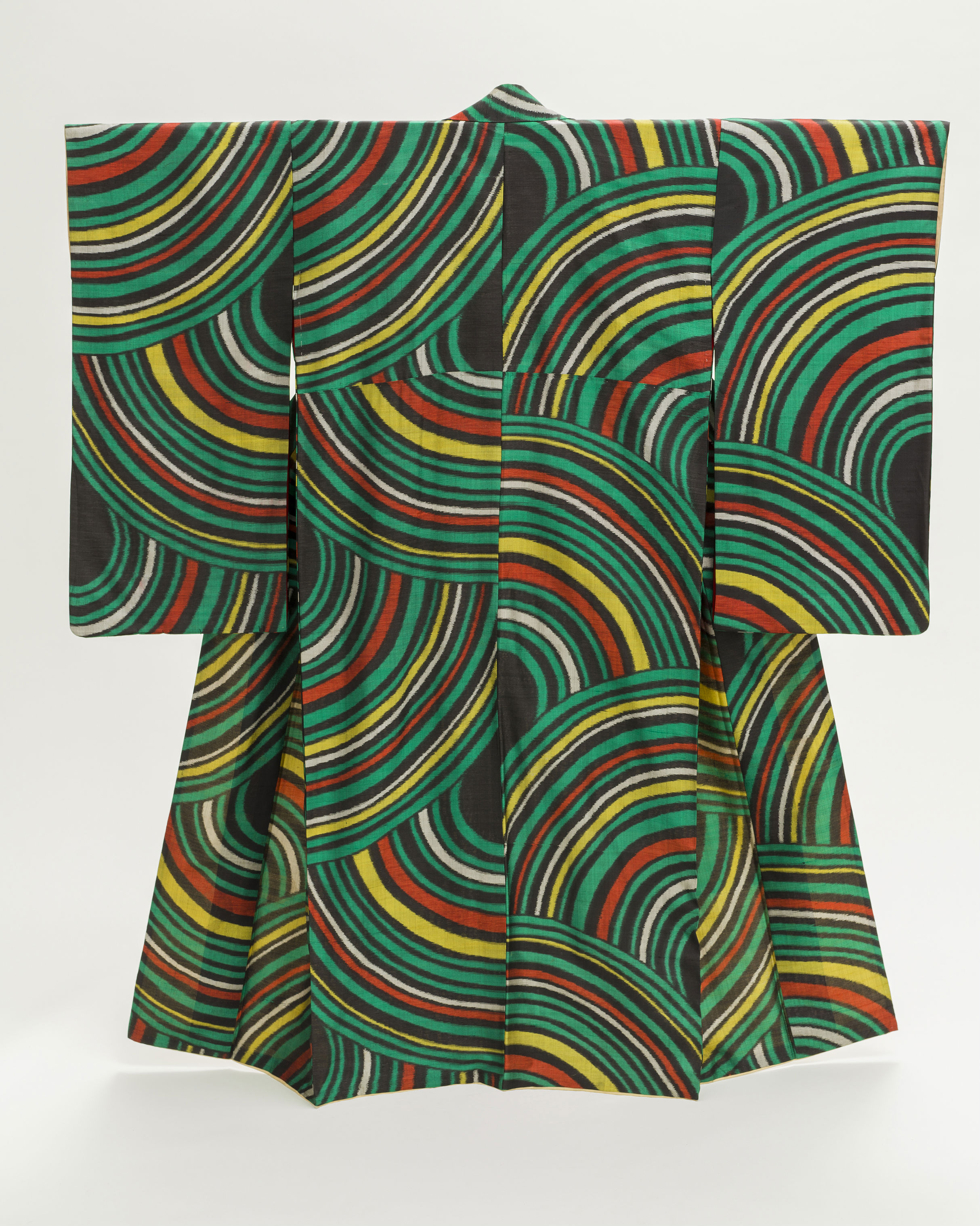
Woman's Unlined Kimono (hitoe) with Curvilinear Bands of Stripes. Japan, early Shōwa period (1926-89), c. 1940. Photo and caption courtesy Museum Associates/LACMA.
These kimonos were once de rigeur. Women bought them at department stores. As a result, they didn't exactly go down in history. "Not a lot of knowledge exists about these textiles," explained LACMA curator Sharon Takeda in an interview with The Wall Street Journal this week. "Because they weren't haute couture."
But they are striking. (In the WSJ article, Takeda describes one as "a landscape on acid.")
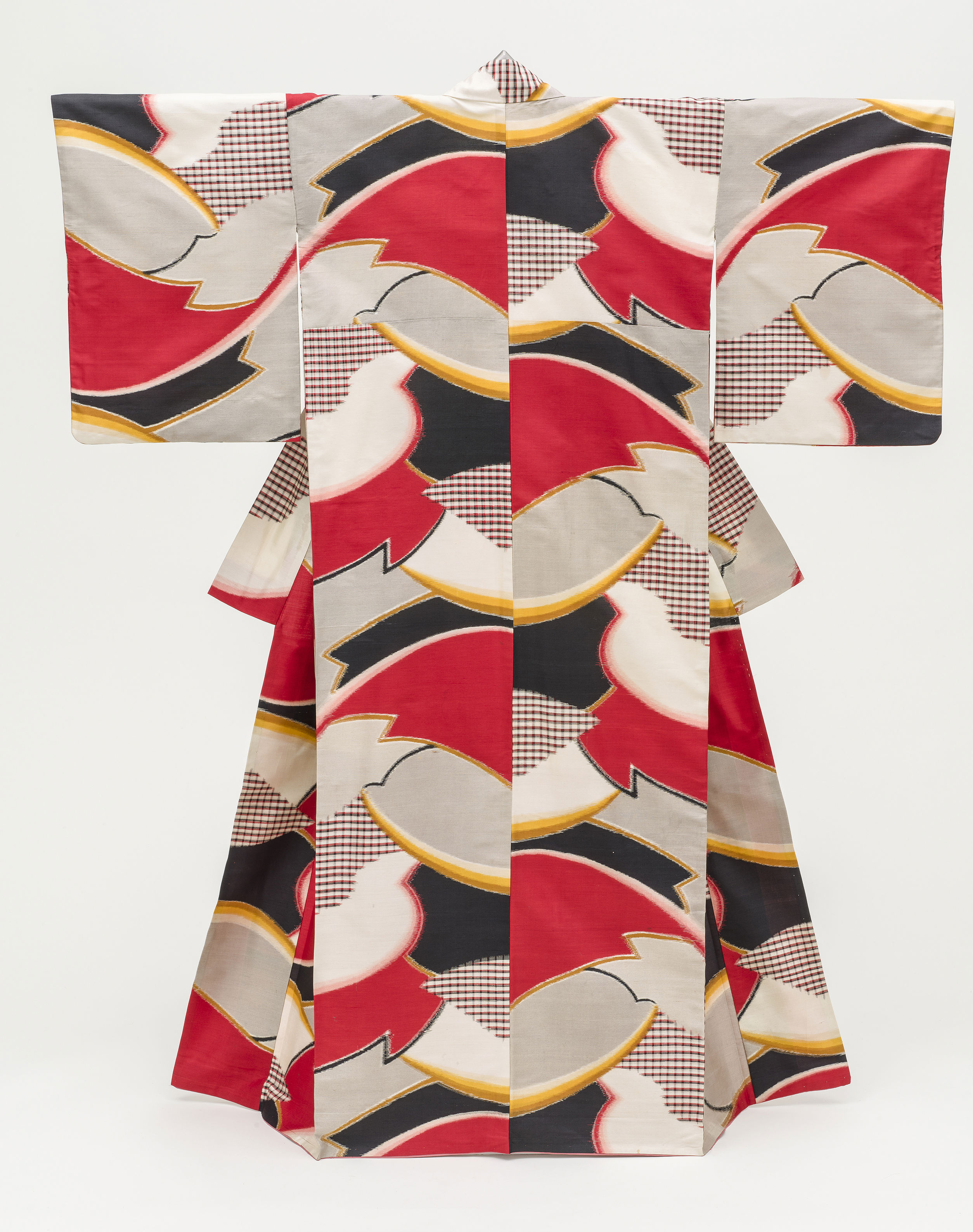
Woman's Kimono with Abstract Design. Japan, mid-Shōwa period (1926-89), c. 1950. Photo and caption courtesy Museum Associates/LACMA.
The exhibit explores the larger cultural shift represented by the changed garment, which previously did not even have a name. Not until an American naval squadron glided up to the coast of Japan in 1853, demanding the country open its ports, was there need for one. Realizing the West was a force to compete with, Japanese men and women began to hybridize. They adopted suits and dresses. A word arose for the clothing once so primary it was called nothing: the "kimono," which translates to "the thing worn."
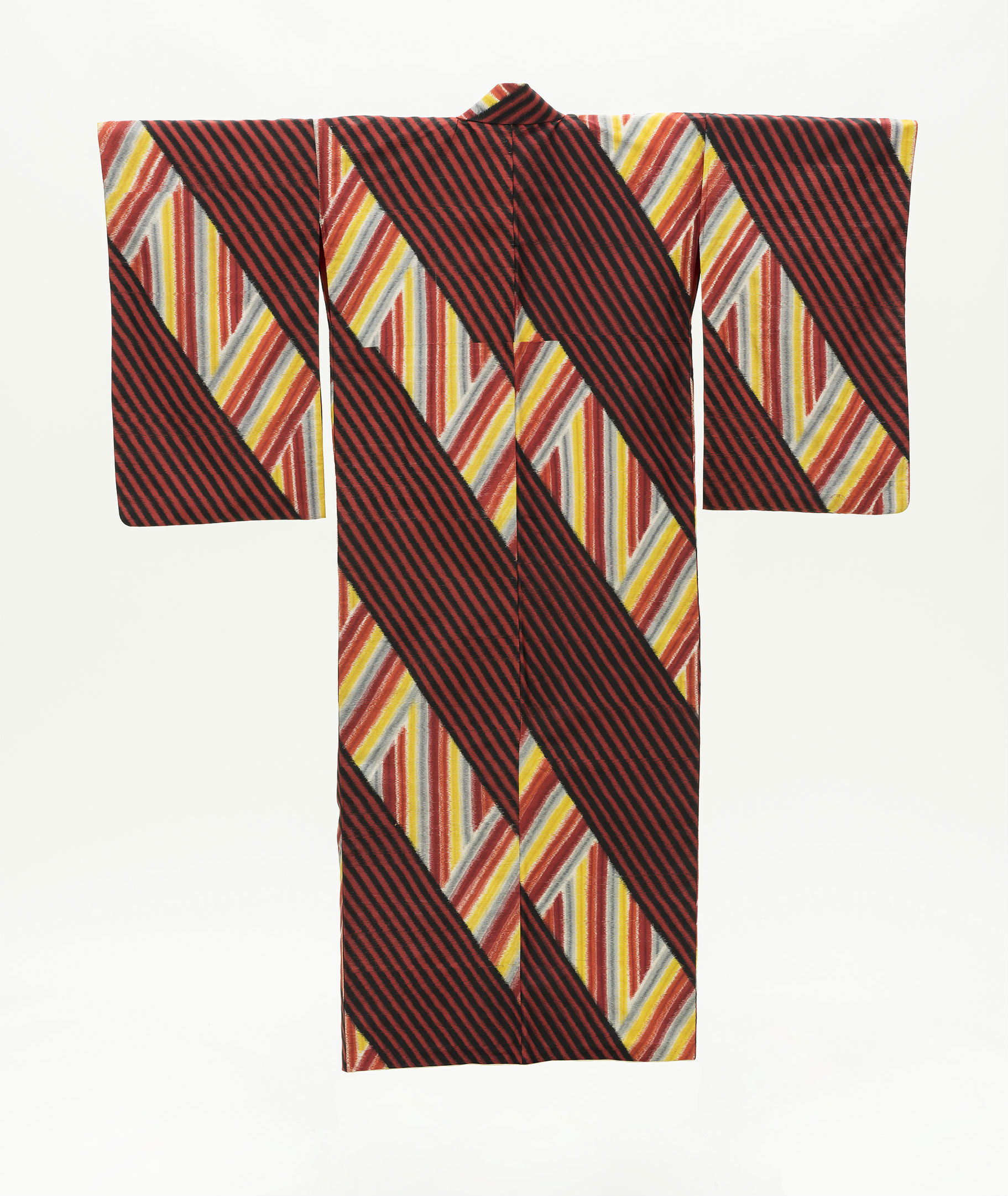
Woman's Kimono with Diagonal and Vertical Stripes. Japan, mid-Shōwa period (1926-89), c. 1950. Photo and caption courtesy Museum Associates/LACMA.
Cultural exchange goes both ways, and so the kimono traveled -- sold out of shops in London and New York. It became a fixture in the Western imagination, trotted out on stages and movie screens when a certain place and time needed representing. And yet, even now, it is mysterious. Who knew kimonos come in polka dots? That too, large ones of all colors, like the orbs of Yayoi Kusama?
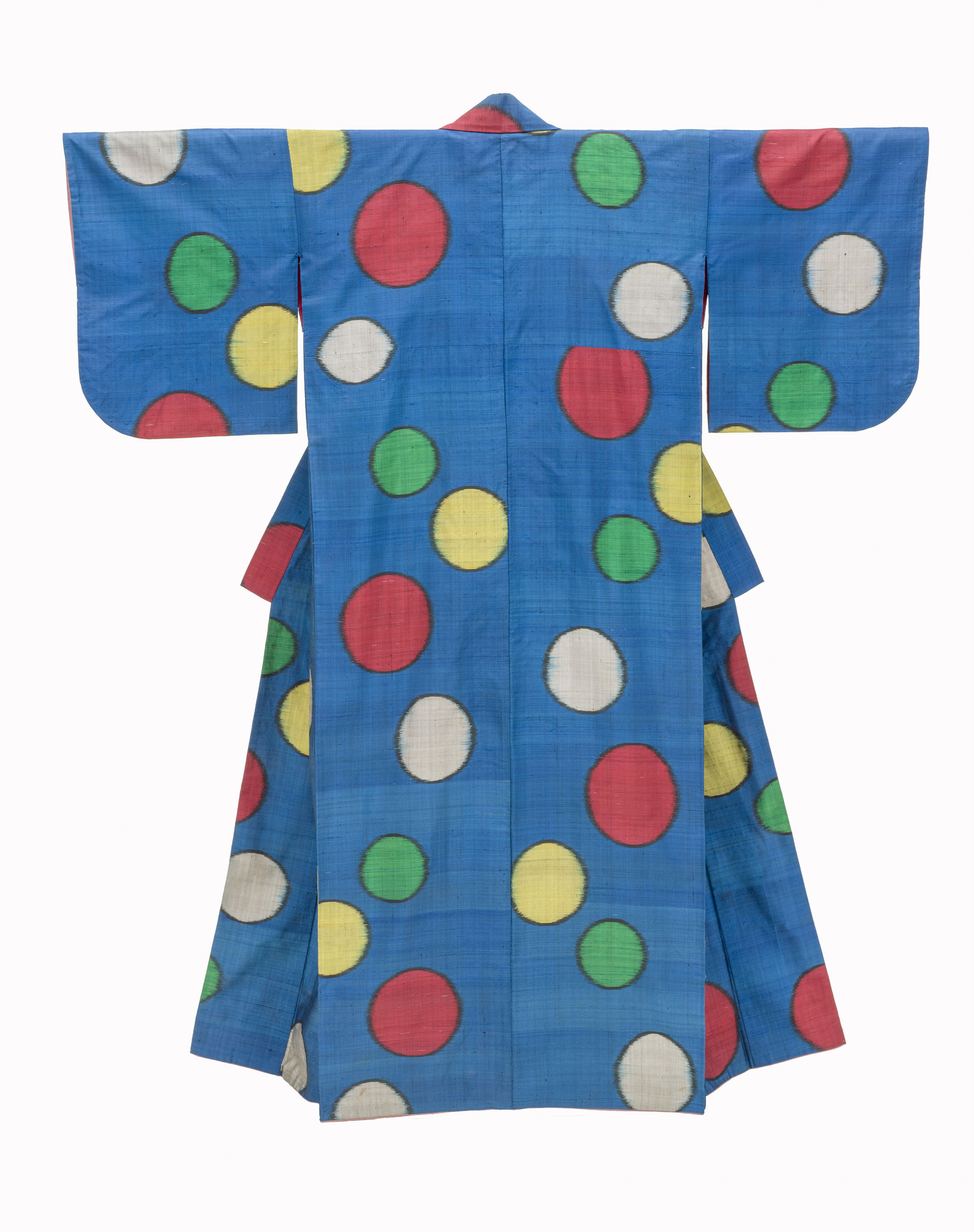
Woman's Kimono with Large Dewdrops. Japan, early Shōwa period (1926-89), c. 1935. Photo and caption courtesy Museum Associates/LACMA.
Influences came from art movements of the time. Everything from Fauvism to the clean lines of art deco crept into the designs, so tracking kimono patterns from this period basically feels like taking a survey course in modern art history. See for yourself with more photographs of the exhibit items below.
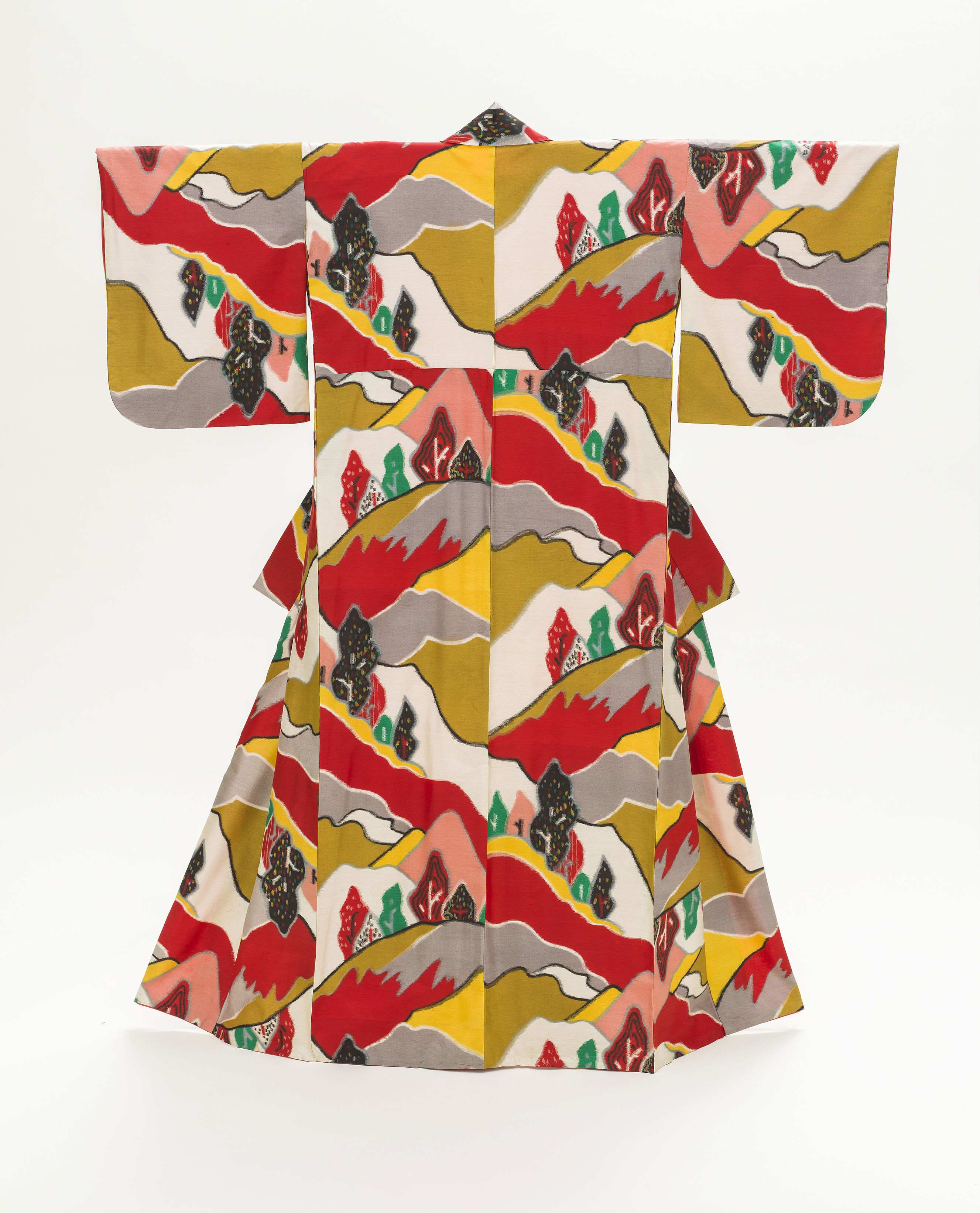
[The kimono above] is strikingly different from the traditional landscape designs popularly depicted on Japanese garments during the Edo period. Instead of a nostalgic nod to the past, this vividly colored landscape looks to modern aesthetics inspired by 20th-century art movements of the West, such as Fauvism, a style that favored vibrant, bold colors over naturalistic hues. Woman's Kimono with Mountain Landscape. Japan, mid-Shōwa period (1926-89), c. 1950. Photo and caption courtesy Museum Associates/LACMA.
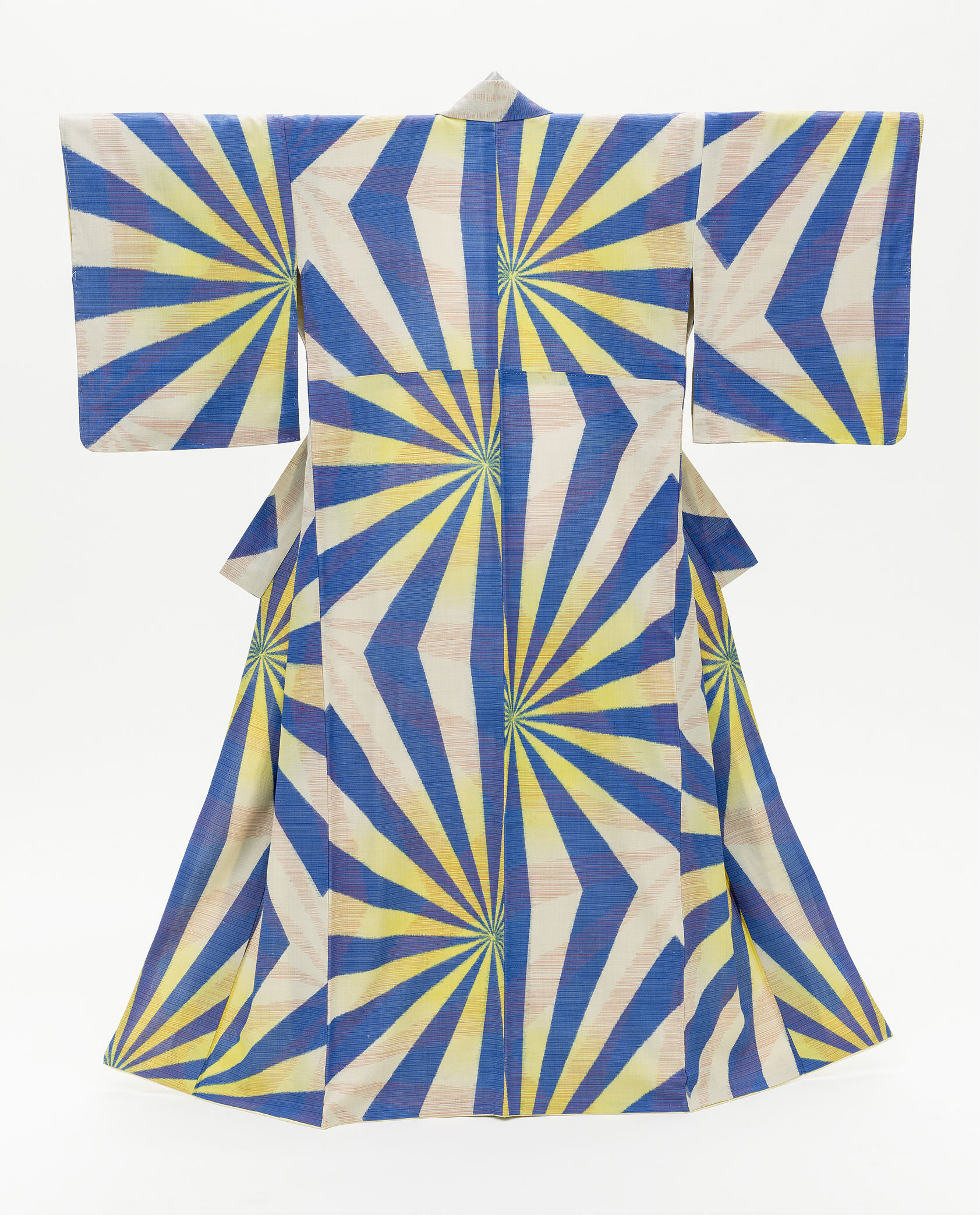
The dramatic starlike design {above] evokes the red sun rays depicted on the “rising sun flags” that symbolized good luck during the Edo period (1615–1868). This motif was adopted as Japan’s national flag in 1870.
Woman's Kimono with Geometric Pattern. Japan, early Shōwa period (1926-89), c. 1940. Photo and caption courtesy Museum Associates/LACMA.
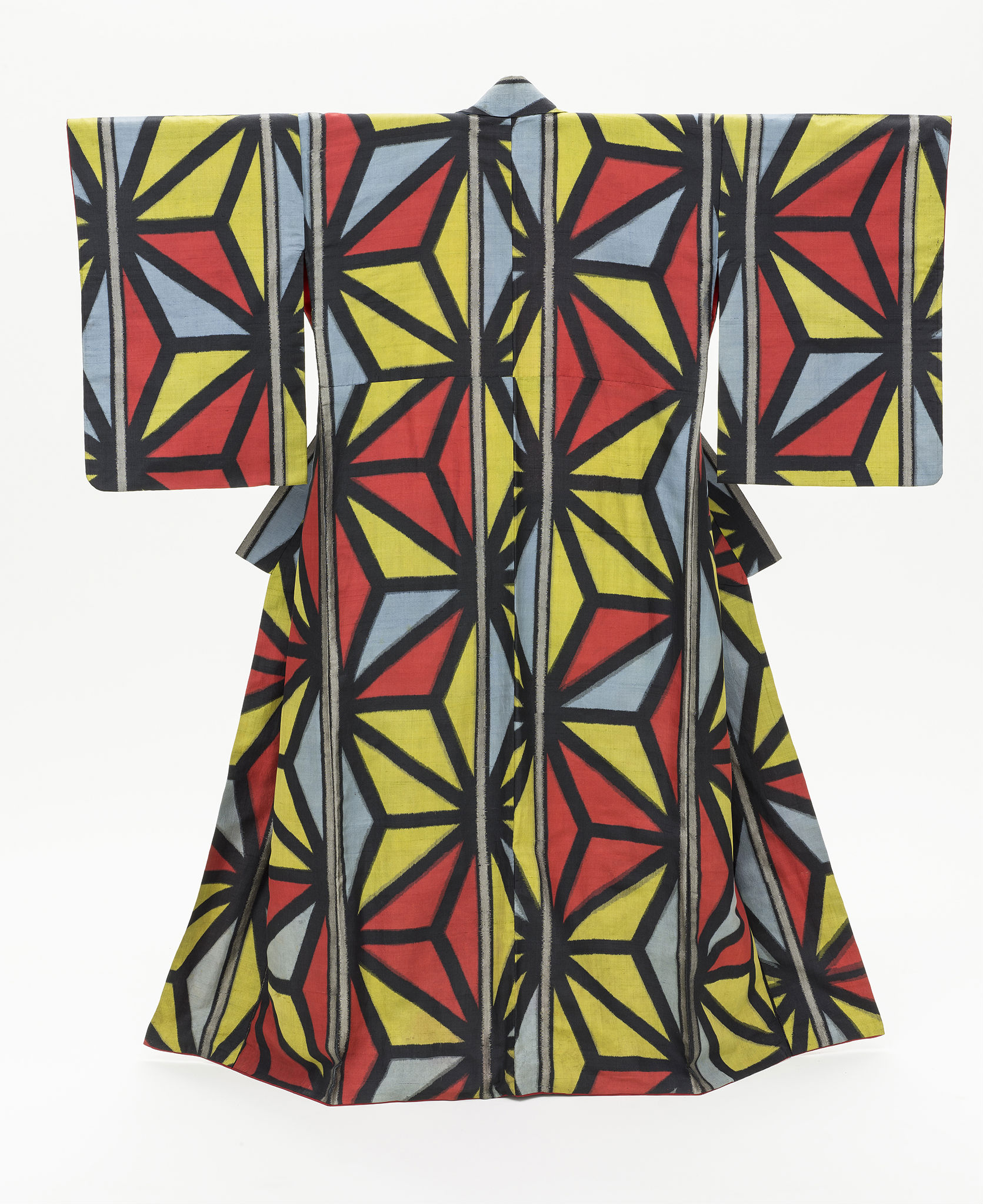
The starlike geometric design [above] resembles the popular abstract hemp-leaf (asa no ha) pattern. Bright primary colors and strong black lines modernize the traditional pattern, transforming it into a dramatic geometric composition with a three-dimensional effect. The vertical stripes can be interpreted as the fast-growing and long, strong stalks of the hemp plant, which is an auspicious motif signifying vigor and resilience. Woman's Kimono with Abstract Hemp-Leaf Pattern. Japan, early Shōwa period (1926-89), c. 1935. Photo and caption courtesy Museum Associates/LACMA.
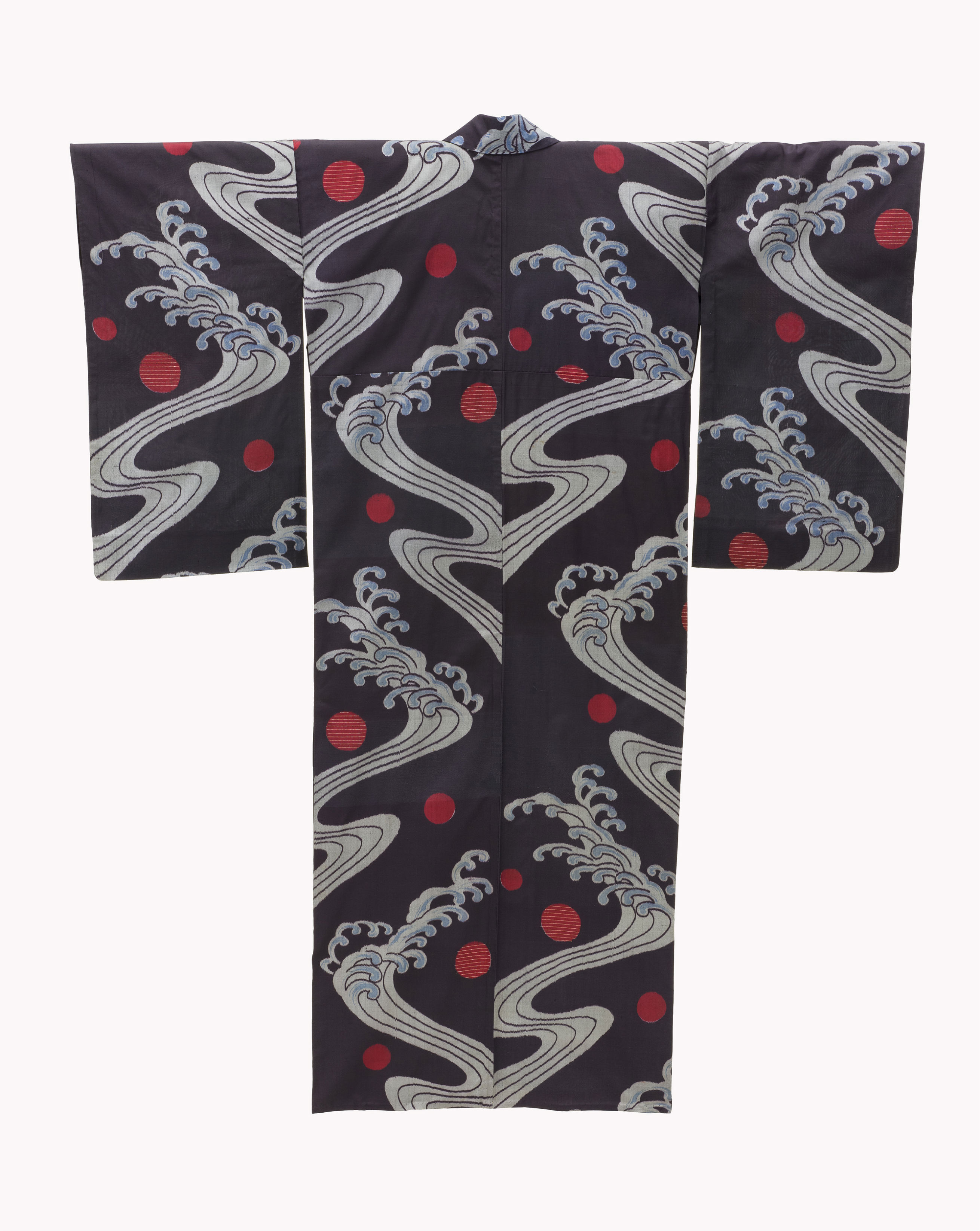
The ways that Japanese artists captured the beauty and power of nature with a simple stylized line or form, as seen [above], inspired artists in the West and informed Western art movements such as Art Nouveau. Woman's Unlined Kimono (hitoe) with Waves and Dots. Japan, early Shōwa period (1926-89), c. 1935. Photo and caption courtesy Museum Associates/LACMA.
